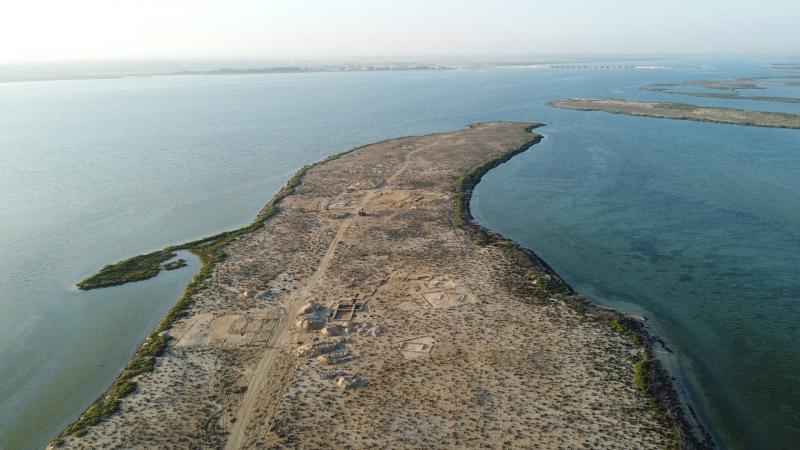Every year, archaeologists immerse us in a new array of fascinating discoveries that provide a better understanding of ancient humans and how life was thousands of years ago.
As we approach the new year, here is a list of the most notable archaeological discoveries in the Middle East and North Africa during 2023:
**Egypt**
A variety of archaeological artifacts were extracted from Egypt this year, ranging from remains of early whales, a sunken ship from the 3rd century BC, to a statue of Buddha. Perhaps the most significant discovery was the finding of the largest two embalming workshops in the Saqqara archaeological area in the Giza Governorate, southwest of Cairo. According to Dr. Mostafa Waziri, Secretary General of the Supreme Council of Egyptian Antiquities, these workshops date back to the late 30th dynasty and the beginning of the Ptolemaic era, which he announced during a conference in May.
**Saudi Arabia**
Najran has been regarded as an area of urban settlement and an important site along the ancient trade route due to its favorable location and climate, according to the Saudi Press Agency "SPA." In February 2023, the Kingdom announced the discovery of a bronze bull's head statue along with other archaeological artifacts at the Al-Ahkhud site in Najran. The report from the SPA, about the Heritage Authority, stated that the bull's head was made of bronze. It is known that the bull's head was a common motif in the kingdoms of southern Arabia in pre-Islamic times, representing strength and fertility.
**United Arab Emirates**
In March, archaeologists revealed what they believe to be the oldest pearl fishing city in the Gulf, located on the Seniah Island, east of Umm Al-Quwain Emirate. This city, covering an area of 12 hectares, thrived from the late 6th century to the mid-8th century AD, prior to the emergence of Islamic civilization, according to the Department of Tourism and Antiquities in Umm Al-Quwain. Researchers revealed that the city was one of the "largest surviving urban settlements" known today in the UAE. It is believed that thousands of residents lived in this city, many of whom relied on the pearl industry. One scientist noted the possibility that the city's inhabitants practiced Christianity due to the proximity of the settlement to an ancient Christian monastery discovered last year.
**Jerusalem and Gaza Strip**
In February, a lead coffin dating back to the Roman era was uncovered at a 2,000-year-old Roman cemetery in the Gaza Strip, which is located along the northern coast of Gaza, 500 meters from the sea. In May, archaeologists in Jerusalem discovered two ancient toilets dating back 2,500 years. Scientists noted that "users of these toilets suffered from severe intestinal pain."
**Oman**
Archaeological excavations in Oman revealed a settlement dating back 5,000 years, as reported by the official site of the Oman News Agency in January. The settlement was discovered at the Al-Gharyeen archaeological site in the North Al-Sharqiyah Governorate during the second excavation season. The Omani News Agency stated, “This settlement is among the earliest that indicates unique organization and planning not seen in the region before the Bronze Age, featuring tower structures surrounded by multi-room residences and a cemetery with several mass graves, in addition to the remains of other buildings.” The archaeological findings suggest that the residents practiced early agriculture, livestock raising, copper smelting, exchange with coastal communities, and external trade.




